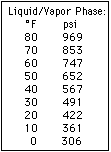ThatGuyMike
Member
Hey Everyone. I've been searching around the site for an answer but been unable to find it, so apologies in advance if it's been asked to death.
Been homebrewing for a year now and just kegged for the first time yesterday. I've got it (keg & co2 tank) in a spare fridge at 40 degrees at 11PSI (i used Kegerator.com's chart).
My question is: am i supposed to keep the co2 tank open this whole time, or am i supposed to close it? Right now I've had it open in there since last night, and I just checked it this morning & noticed the regulator is almost in the red. Makes me wonder if I either have a leak somewhere or if i should be turning the tank off and only hitting it with a specific amount of CO2 for a specific amount of time.
Oh, and it may be obvious from what I mentioned, but I planned on doing the slower set-and-forget-it method over the faster carb method. Just wanted to keep it as simple as possible for my first go-round. Thanks!
Been homebrewing for a year now and just kegged for the first time yesterday. I've got it (keg & co2 tank) in a spare fridge at 40 degrees at 11PSI (i used Kegerator.com's chart).
My question is: am i supposed to keep the co2 tank open this whole time, or am i supposed to close it? Right now I've had it open in there since last night, and I just checked it this morning & noticed the regulator is almost in the red. Makes me wonder if I either have a leak somewhere or if i should be turning the tank off and only hitting it with a specific amount of CO2 for a specific amount of time.
Oh, and it may be obvious from what I mentioned, but I planned on doing the slower set-and-forget-it method over the faster carb method. Just wanted to keep it as simple as possible for my first go-round. Thanks!




























![Craft A Brew - Safale S-04 Dry Yeast - Fermentis - English Ale Dry Yeast - For English and American Ales and Hard Apple Ciders - Ingredients for Home Brewing - Beer Making Supplies - [1 Pack]](https://m.media-amazon.com/images/I/41fVGNh6JfL._SL500_.jpg)






























